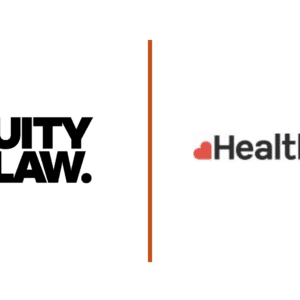Gender pay gap reports – are you ready?
Under the Equality Act 2010 (Gender Pay Gap Information) Regulations 2017 (the GPG Regulations) which came into force in 2017, employers with 250 or more employees must publish annual reports on their mean and median hourly rate of pay and bonuses across four pay quartiles for each gender. Last year, the overall average gender pay gap was 9.7%.
As the 4 April deadline for this year’s reporting fast approaches, some employers (around 10%) have released their latest figures, which suggest that the pay gap may be reducing (down to 8.4%). The Times reported this week that at the present rate of progress, equality between top earners will not be achieved for 36 years – a calculation based on research by investment platform Easymoney which found that 79% of people earning more than £100,000 a year are men. This figure has fallen only marginally since 2011.
What does this mean for businesses?
Irrespective of media reports, having a gender pay gap doesn’t necessarily mean that the business has failed to address inequality in the workplace. An employer with a pay gap above the national average might, for example, be a small family business, owned and run by two brothers. Even if they champion workplace equality, their overall average gender pay gap is likely to be skewed because the two most senior people in the business are male. Facts such as this can (and should) be explained in the narrative to accompany the report. We find that narratives are generally underused – they should be used to provide explanations, set out wider recruitment strategies, explain how the business proposes to tackle unconscious bias in its industry or organisation, or how it plans to remove obstacles that have traditionally prevented female employees from rising to the top. Kwik Fit has already published its report for this year, and its gender pay gap has gone from -15.2% (i.e. women were paid more) to +14%. Surely such a swing in the figures warrants an explanation, but its narrative simply states:
Because of the nature of the work undertaken across the Company, and the fact that careers in our wider industry have been historically more appealing to men, it is notable that female employees comprise a minority of our workforce. Typically, our female employees are in marketing, administration, and other head office or regional support roles, as opposed to working in our centres. (Kwik Fit Gender Pay Gap Report, 2019).
Since publishing its 2019 report in January, which was picked up by the media, Kwik Fit has sought to explain the new gap on the basis that a number of senior female employees have left the company, but its narrative says nothing about this.
Do the GDG Regulations help tackle inequality?
To some extent yes, they do – if it wasn’t for the regulations, we would probably not be talking about this issue so widely and consistently.
The main criticisms of the GPG Regulations are that there are no enforcement mechanisms or sanctions for failing to comply with the reporting obligations or publishing inaccurate or misleading reports. The government consultation on the lack of enforcement action included the possibility of introducing a “name and shame” scheme for noncompliance (like the national minimum wage “Naming Scheme”). Nevertheless, it is clear that employers are quite capable of ‘self-shaming’ by failing to publish any reports at all or by publishing reports which paint them in a bad light. Not only can this negatively impact the recruitment and retention of female employees, but it can also have wider reputational implications, such as affecting a company’s ability to successfully tender for work.
What should you be doing about it?
If you have over 250 employees, you will need to prepare a report. We can help you with this, but in the meantime, you should also be considering:
- if you produced a report last year, what’s changed and WHY: this is important not only for the purposes of the report, but also for your own internal management purposes. You may need to undertake a pay and grading review to understand the reasons for any disparities and to identify whether these can be rectified. If your pay gap has improved, you need to understand why so that you can keep up the good work.
- who will sign the written statement confirming the accuracy of the published information: this might sound obvious, but not identifying sign-off responsibility at the outset can lead to unnecessary delay to your report being published.
- the contents of any narrative to accompany the gender pay gap information and whether any additional data will be produced: this is especially important if your figures will be skewed by one or two particularly high or particularly low paid employees.
- whether to produce an action plan setting out the steps you plan to take to narrow the gender pay gap: alongside the narrative, this is a really good way to counteract the effects of an unfavourable report.
- whether any policies or procedures will need to be updated due to proposed actions: practice what you preach! Publishing your report is an exciting opportunity for evaluation, change, introducing new initiatives and demonstrating to your employees that you are committed to creating an inclusive and supportive workplace.
If you have already prepared your gender pay gap report and you are looking to implement measures to tackle the pay gap, here are the government’s recommended actions that have been proven to improve equality:
- Interview shortlists should include at least two women – the inclusion of only one woman has been shown not to increase the chances of appointing a woman by any statistically significant amount).
- Use skill-based assessment tasks and structured interviews, as unstructured interviews are more prone to bias.
- Encourage salary negotiation by publishing a salary range for each job and stating clearly if it is negotiable.
- Have transparent policies and criteria for promotion, pay, and reward processes.
- Appoint a diversity manager or diversity task force to monitor the processes for recruitment and promotion.
For further advice and support on tackling inequality in your workplace, please contact Claire, Rebecca and Rachael in our employment team.






